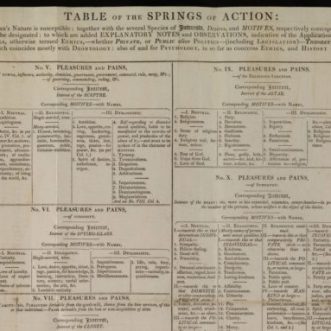
Bring your whole self to work
Conventional economic theory views human beings as rational seekers of pleasure and avoiders of pain – ‘homo economicus’. We must be forced to work by the threat of starvation, while at the same time we must be persuaded to gratify every passing whim in order to boost consumption and profits.
Asking people to “Bring your whole self to work” is an acknowledgment that this view simply isn’t true.
But sometimes I do wish that people would respond to this request as ‘homo economicus’:
“Pay me for my whole self then.”
Take a closer look at Bentham’s ‘Springs of Action’ here.








